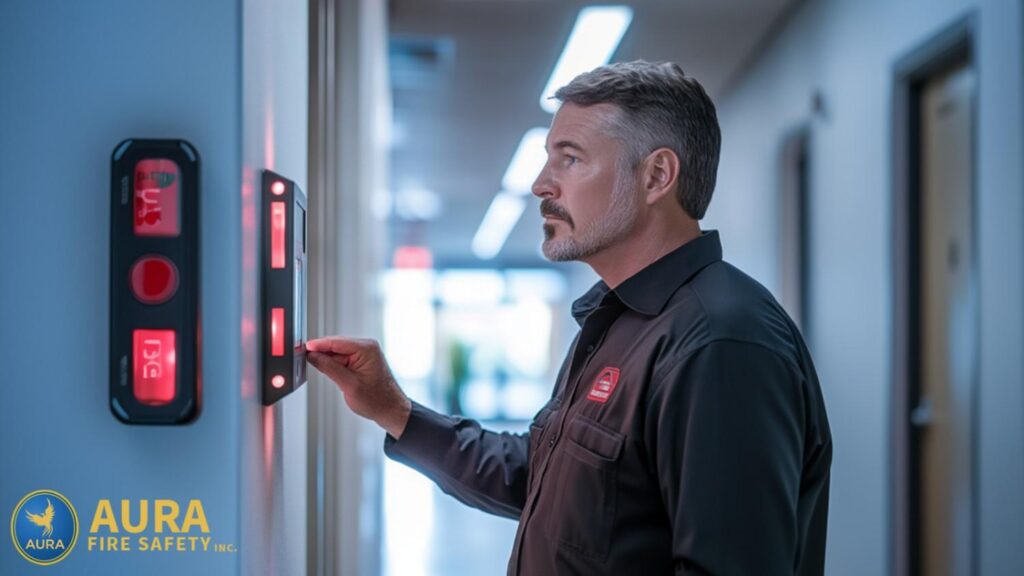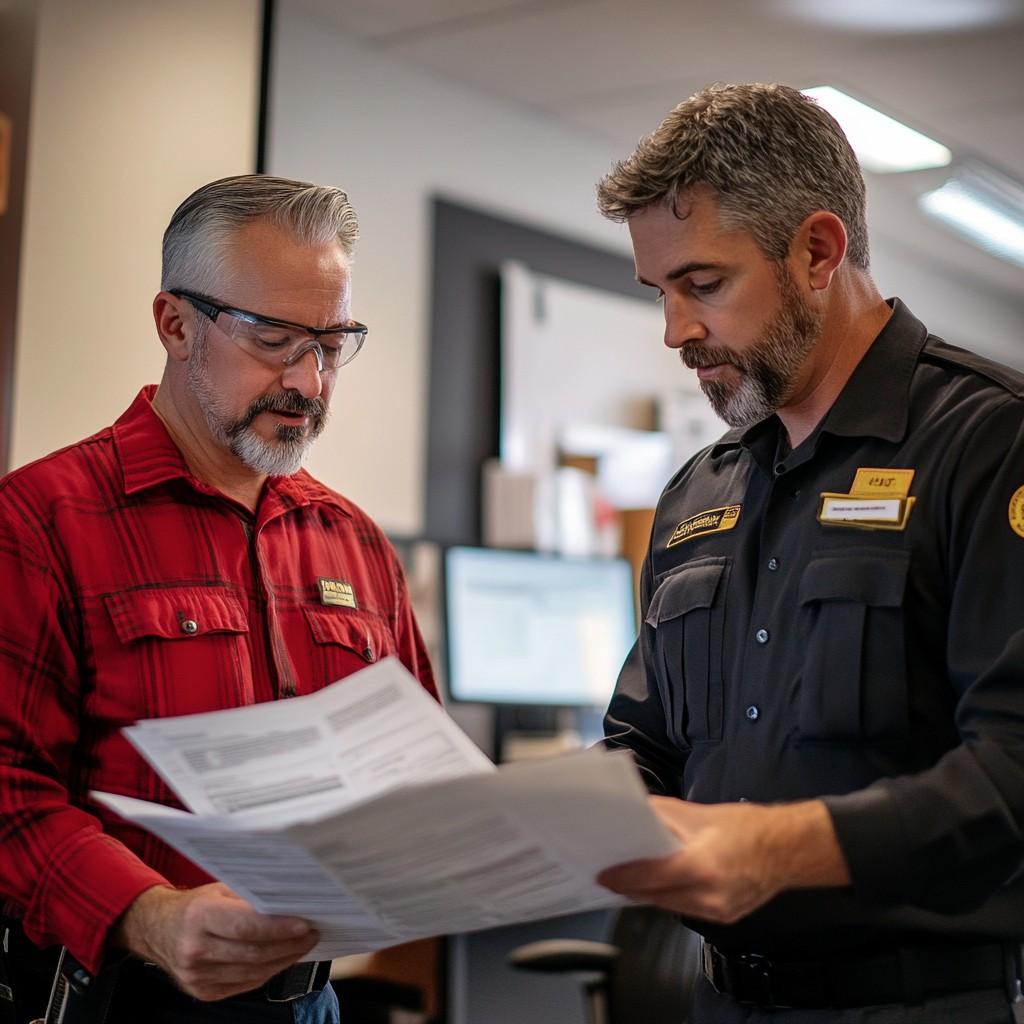Staying aligned with local regulations and industry standards ensures that your commercial and residential properties are equipped with reliable fire protection systems. This guide thoroughly analyzes fire compliance, local fire codes, and the critical steps to prepare for a successful fire inspection. From understanding fire compliance basics to responding to non-compliance notices, this resource provides everything you need to keep your property safe, compliant, and equipped with effective fire protection services.
What is Fire Compliance, and Why Does It Matter?
Fire compliance involves adhering to fire safety regulations established by local authorities and organizations like the National Fire Protection Association (NFPA). Meeting compliance standards ensures that your property is equipped with critical fire protection systems—such as fire sprinklers, fire alarms, and emergency lighting—that are regularly inspected and maintained. Compliance is not just a regulatory requirement; it’s a proactive approach that directly impacts your property’s safety and operational resilience.
Why Compliance Matters
- Safety and Risk Reduction: Compliance ensures that fire protection systems are installed and maintained to respond effectively during a fire. A compliant system provides a robust safety net, helping to protect occupants and minimize damage to the property.
- Financial Protection: Non-compliance can lead to substantial fines, legal liabilities, and elevated insurance premiums. Property owners avoid these financial risks by maintaining compliance and demonstrating a commitment to fire safety standards.
- Operational Reliability: Compliance standards typically require regular inspections and maintenance, enhancing fire protection systems’ reliability. A well-maintained system is more likely to perform effectively when it matters most, reducing the risk of failure during an emergency.
Comprehensive fire protection services ensure that your property meets all compliance requirements. With detailed inspections, expert installation, and diligent maintenance, these services help keep your property safe and aligned with industry standards.
What is the Purpose of a Fire Inspection?
A fire inspection is a detailed assessment conducted by certified professionals to evaluate your property’s fire safety status and compliance with local codes. The primary objective of a fire inspection is to identify potential hazards, verify the operational status of all fire safety systems, and confirm that your property adheres to regulatory standards. Fire inspections go beyond compliance—they’re essential to risk management, helping prevent incidents and protect lives and assets.
Importance of Regular Inspections
Regular fire inspections are vital for maintaining the functionality and readiness of fire protection systems. You can identify and resolve issues by conducting frequent evaluations, ensuring that each system remains prepared to respond in an emergency. Inspections are about early intervention and maintaining the reliability of your systems.
- Early Issue Detection: Regular inspections help identify minor issues—such as worn sprinkler components or low battery power in alarms—before they escalate into critical problems that could compromise safety.
- Ensured Compliance: Adhering to inspection schedules helps align your property with local and national fire codes, avoiding potential fines and ensuring ongoing safety.
- Dependable Emergency Response: Consistent maintenance and inspections ensure fire protection systems perform as expected in emergencies, significantly reducing risks to life and property.
Key Elements of Fire Compliance
Achieving fire compliance means more than simply meeting legal obligations—it’s an active commitment to safeguarding lives and property. To be compliant, all essential fire protection systems, including fire sprinkler systems, fire alarm systems, and emergency lighting, must be in place, functional, and reliable. Compliance requires adherence to stringent standards that govern each system’s installation, maintenance, and inspection protocols.
Fire Sprinkler Systems
Fire sprinklers are vital for containing fires quickly, limiting property damage, and allowing safe evacuation. Meeting compliance standards for fire sprinklers involves:
- Routine Inspections: Compliance codes mandate regular inspections to ensure that sprinklers are operational and free of leaks, blockages, or corrosion. This includes visual checks of sprinkler heads and pipes.
- Flow Testing: Flow tests simulate sprinkler activation to verify that water pressure and volume meet the required levels for effective operation during an emergency.
- Code Compliance: Fire sprinklers must meet specific installation, placement, and inspection frequency requirements. Regular updates to local fire codes may affect these standards, requiring property owners to stay informed and responsive.
A fully functional fire sprinkler system is essential for effective fire control, and regular maintenance prevents minor issues, like clogged heads, from reducing the system’s effectiveness.
Fire Alarm Systems
Fire alarm system inspection and design are critical components of fire protection, ensuring that alarms alert occupants and trigger a prompt response during emergencies. Compliance in fire alarm systems includes:
- Strategic Placement: Alarms must be positioned to cover all areas, carefully considering building layout, occupancy, and fire hazard locations.
- Regular Testing: Testing alarms periodically is crucial to ensure they function correctly and can alert emergency services if needed. This includes sound level checks to confirm alarms can be heard throughout the building.
- Monitoring for Commercial Properties: Many commercial properties require 24/7 monitoring, connecting fire alarms to emergency response services to guarantee immediate notification during an emergency.
Fire alarms are the first line of defense; regular testing ensures they are prepared to perform their role in life safety and property protection.
Emergency Lighting
In a fire emergency, smoke and potential power outages can severely impair visibility. Emergency lighting provides essential illumination to guide occupants to safety. Compliance requirements for emergency lighting include:
- Key Area Installation: Emergency lighting should be installed in high-traffic areas, such as hallways, stairwells, and exit paths, to facilitate safe evacuation.
- Routine Inspections: Compliance codes require regular checks of emergency lighting to verify battery life and bulb functionality. These inspections ensure lights activate automatically during power failures.
- Battery Backup: Emergency lighting systems are equipped with battery backups. Regularly testing backup batteries is critical to ensure reliability when lighting is needed most.
Well-placed and properly maintained emergency lighting can significantly improve evacuation success and support a smooth, safe exit.
What Inspectors Evaluate in a Fire Alarm System Inspection
Fire alarm inspections are a critical part of fire safety compliance. Certified inspectors thoroughly assess fire protection systems to verify operational readiness, compliance with national and local fire codes, and overall system reliability. These inspections ensure that all safety measures function correctly in an emergency, reducing potential risks to life and property.
Comprehensive Fire Alarm System Evaluation
During a fire alarm inspection, professionals conduct a detailed assessment to confirm that all components operate as required. This process includes:
- Fire Sprinkler System Check – Inspectors evaluate fire sprinkler systems for leaks, blockages, corrosion, and proper placement. They ensure that sprinkler heads remain unobstructed and may conduct flow tests to verify water pressure and distribution meet operational requirements.
- Alarm Functionality Testing – Fire alarms are tested to confirm that they activate properly and emit a loud enough alert for all occupants. If the system is connected to emergency services, inspectors verify that signals transmit correctly.
- Emergency Lighting and Exit Signs – Inspectors check that emergency lighting activates automatically in low-visibility conditions, ensuring proper illumination along exit paths.
- Access to Critical Equipment – Fire inspectors confirm that essential equipment, such as the fire alarm panel, fire sprinkler riser, and control valves, is easily accessible for immediate use in case of an emergency.
Ensuring Compliance with Fire Safety Standards
Fire alarm system inspections follow national and local fire codes to maintain compliance and safety. Inspectors assess:
- NFPA and Local Code Adherence – Ensuring fire alarms and sprinklers meet NFPA 72 and NFPA 25 requirements, as well as local building codes.
- Monitoring and Response Integration – Verifying that alarm systems are properly connected to emergency monitoring services, where required.
- System Readiness for Emergencies – Inspectors ensure that all fire protection systems, from alarms to sprinklers, are in optimal working condition, ready to operate effectively during a fire.
Expert Help for Your Fire Inspection
Preparing for a fire inspection doesn’t have to be overwhelming. With over 27 years of experience, Aura Fire Safety is a trusted partner in the San Francisco Bay Area, offering comprehensive fire protection solutions. From fire sprinkler installations and fire alarm design to full system maintenance, we ensure your property is compliant, protected, and inspection-ready.
Contact Aura Fire Safety today to schedule an assessment or consultation. Let us provide you with proven, reliable solutions that meet all fire safety requirements. Safeguard what matters—partner with Aura Fire Safety.




 The Ad Firm
The Ad Firm